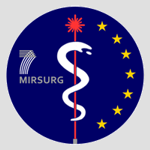


| External Collaborators |
| Public
Deliverables and Reports |
|
Recent experiments have verified that the use of mid-IR free-electron lasers (FELs) at wavelengths near 6.45 µm, with a focused beam penetration depth comparable to the cell size and coupled both into the spectral wing of the water bending mode and the amide-II vibrational mode, results in tissue ablation with minimal collateral damage and very effective ablation rate. This finding is extremely important as a useful tool for minimally invasive human surgery. However, the clinical use of FEL is ultimately not viable due to large size, high cost, operational complexity and restricted access at a few million-dollar accelerator-based facilities worldwide. Several attempts to develop non-FEL alternatives have largely failed to meet the necessary requirements in terms of pulse energy and repetition rate. The main strategy in this project will be to exploit nonlinear optical techniques (OPO) in combination with novel near-IR laser pump sources (near 1 and 2 µm) and new materials (e.g. orientation patterned GaAs) to obtain an unprecedented energy level (10 mJ) near 6.45 µm at a repetition rate of 100 Hz (an average power of 1 W). Two basic approaches, differing in the time structure, will provide less than few µs (macro) pulse duration. The project encompasses four distinct elements: (1) Material research; (2) Pump laser development; (3) OPO development; and (4) Validation in tissue ablation experiments. The main goal which should be achieved within the project will comprise laser system development (at different wavelengths and in different temporal regimes) and OPO and SPOPO development for frequency conversion (including novel nonlinear materials), as well as validation studies in tissue ablation experiments performed with delivery optics. The end result of the project will thus be the development of a new class of practical table-top laser sources which, together with novel fiber delivery systems, will contribute to and enable new approaches in micro surgery in combination with minimally invasive surgery. The systems will provide improved control and higher accuracy for treatment and prevention either at individual cell level or cellular structures depending on the pulse shapes utilized. |
|
|
|